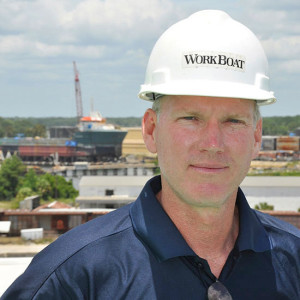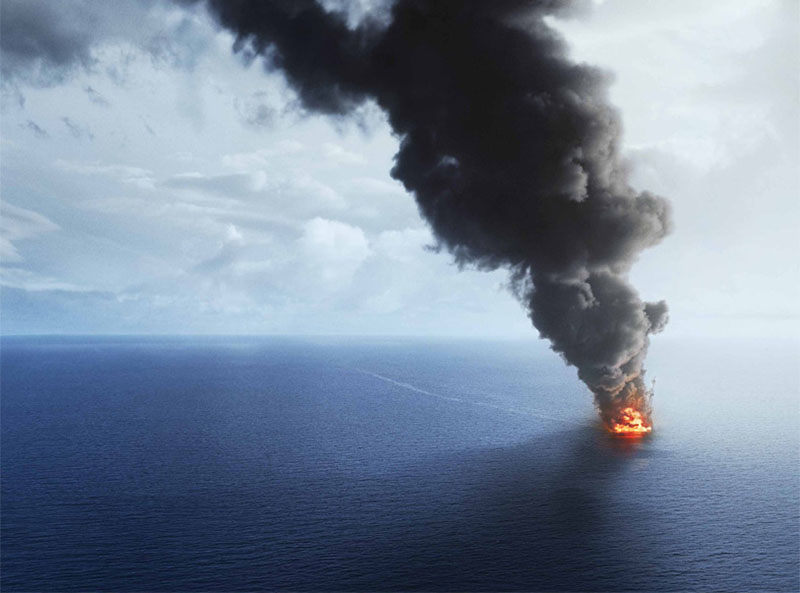In the 2010 Deepwater Horizon disaster, a judge placed most of the blame on BP. U.S. District Judge Carl Barbier assigned 67% of the liability to BP, 30% to Transocean and 3% to Halliburton. I kept those percentages in mind as I screened the movie “Deepwater Horizon” when it opened on Friday.
I was also mindful of what Variety said in its review: “For a movie in which you can’t follow what’s going on for 75% of the time, 'Deepwater Horizon' proves remarkably thrilling — and could well become one of the fall’s biggest hits.” I agree with that assessment, though I was able to get most of what was going on and most workboat industry members should as well. But if you are expecting a deep account of who was responsible for the environmental disaster and why it occurred, you won’t get it from this film.
For the most part, “Deepwater Horizon,” which was a typical fast moving action and suspense-filled disaster movie, was true to Judge Barbier’s percentages. It placed most of the blame on BP. (BP leased the Transocean-owned Deepwater Horizon semisubmersible rig, and Houston-based Halliburton was the cement contractor on the Macondo well.)
The film, directed by Peter Berg (“Friday Night Lights”) and based on an article in The New York Times, was a tribute to the 11 lives that were lost that day and the 115 survivors.
The Tidewater offshore service vessel Damon Bankston was featured prominently in the film for its role in rescuing the survivors. Alwin Landry, captain of the Damon Bankston on the night of the explosion, was featured in the film. It was not depicted in the movie (the Bankston was shown idling in the Gulf), but the OSV was tethered to the Deepwater Horizon waiting to load drilling mud when Landry and his crew heard the crude oil shooting up the well. Mud then rained down on the OSV before the first explosion on the platform. As workers jumped from the rig into the Gulf of Mexico to escape the fire, Landry disconnected the Bankston from the rig and his crew launched rescue boats to grab workers from the water. The film showed rescued rig workers on the supply boat’s deck. Seventeen workers with life-threatening injuries were treated on the OSV before Coast Guard helicopters flew them to shore.
The movie made it clear that BP bore most of the responsibility in the Macondo well blowout. The main villains on the rig that day, April 20, 2010, were BP well site leader Donald Vidrine, played by John Malkovich (with his horrible attempt at a Cajun accent), and Robert Kaluza, a BP engineer played by Brad Leland. The two were the highest-ranking BP employees working on the rig.
The film’s main hero was Mike Williams (played by Mark Wahlberg), the senior electrician on the rig. He is constantly seen citing BP for being too focused on cutting costs and saving money. Vidrine (Malkovich) is at constant loggerheads with Jimmy Harrell, offshore installation manager and the boss of the Deepwater Horizon, played by Kurt Russell.
The drilling project is months past schedule and millions of dollars over budget, and Harrell and the rig’s crew are shown finally relenting to pressure from Vidrine and BP and begin the process to finish the well. This involves removing the old drilling mud that was reducing the pressure of the oil below, and offloading it onto the OSV Damon Bankston. That’s when all hell began to break loose.
The disaster scene that follows encompasses most of the movie. Though it jumps around and is hard to follow at times, it was well done. Overall, the movie was very entertaining and tries in spots to do what another Peter Berg-directed film “The Big Short” does — to break down a complex subject and explain it to a mainstream audience. “Deepwater Horizon” is simply a decent disaster movie with the requisite heroes, so don’t expect a detailed account of the Macondo blowout.




